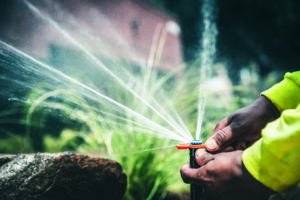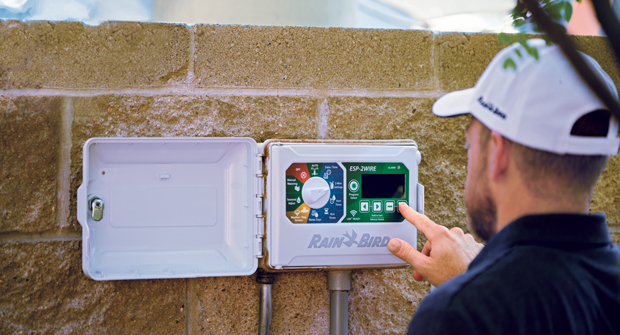Have you ever seen an irrigation system watering a lawn during a rainstorm? Chances are the system did not deploy “smart” technology.
Smart irrigation systems adjust on the fly based on conditions, rather than watering at the same time every day, regardless of environmental factors.
“We all agree that landscapes require different amounts of water throughout the year,” says Don Davis, national training manager at SiteOne Landscape Supply. “A cool, cloudy day in March has a very different watering regimen than a bright, sunny day in July.”
Sean Azad, marketing manager at Rain Bird, and Davis delve into how these systems work and what they equate to in savings.
What’s trending
By definition, a smart irrigation system uses climate data, such as current and future weather and soil conditions, to adjust irrigation schedules. While some municipalities use on-site weather stations to gather this data, most areas use internet weather data to accomplish that task, Davis says.
“It doesn’t just take rainfall data into account — it takes temperature, humidity, and it irrigates when needed to keep the moisture balanced,” Azad says.
Davis says that in recent years, the Wi-Fi components of these systems have become more dependable, and the control apps have also become more user-friendly.

Several other components can boost the intelligence of the overall system, Azad says, citing rain sensors that connect to the control system and stop irrigation during rain as one example.
“After it has stopped raining, the sensor takes time before allowing irrigation to resume,” Azad says. “That prevents you from watering right after it has rained.”
Similarly, flow sensors can monitor a system’s water use and send an alert if there’s a potential leak.
Finally, Davis notes that there has been a movement toward wireless control in which a system’s valves no longer need to be physically connected by a wire.
“Now, we can control that remote valve from the original irrigation controller and still receive all the benefits of the weather data and remote access,” he says.
Why implement?
In addition to significant cost and water savings, there are numerous other benefits to smart irrigation systems as well, such as healthier landscapes.
“When you want a healthy landscape, you don’t want to under- or overwater,” Azad says. “The intelligence in smart systems results in landscapes that look healthier and have a deeper root structure.”
Davis says that smart irrigation systems can result in labor savings, too, especially when it comes to minimizing site visits and maintenance.
“The end user gets a water schedule that’s tailored to exactly what their landscape needs in real time, and the contractor benefits by avoiding the labor and expense of an employee physically visiting the site to adjust these controllers,” Davis says.
What to know
Before installing a smart irrigation system, it’s important to check that the site contains internet access.
“Verify that your Wi-Fi signal strength reaches that location,” Azad says. “Sometimes, it’s outside of a house or in a garage, and you may not have coverage.”
Davis notes that a smart system is not a fix-all for an improperly installed system.
“The term ‘smart irrigation’ isn’t a magic wand,” Davis says. “Smart water management starts with a properly designed, installed and maintained system.”
For instance, improper head spacing, crooked or misaligned sprinklers, leaks, aging components and excess water pressure are all issues that won’t be fixed by adding a “smart” element.
To account for any issues, Azad recommends running the irrigation system through each zone once a month.
“You can have a smart irrigation system … but if you have a broken pipe because somebody ran over it, you’re still wasting a ton of water,” Azad says.


